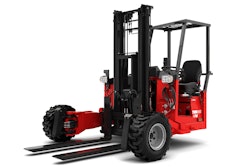
It’s no secret that Covid upended supply chains. Though not the first disruption to put them under fire for delays, shortages or prices – it proved to be the most significant in recent memory.
Indeed, even as companies experienced growth over the past several years, the challenges we faced have been severe. And even though the past six months offered a respite, overall economic conditions are still fragile and uncertain.
Put another way: CEOs, whose job it is to steer their businesses toward the future, find themselves continuously grappling with how to remain stable in the present.
If this milieu sounds familiar, then here’s some good news: With the right strategies, companies can not only navigate the chop, but also capture post-pandemic success.
What are these strategies? Let’s unpack them by addressing seven questions keeping supply-chain executives up at night:
Question 1: Will we ever be able to return to our pre-Covid ways?
Any discussion about how things were done before 2019 is like asking when DVDs will stage a comeback. It’s the equivalent of hoarding incandescent light bulbs. Rather than pining for a past that no longer exists — the so-called return to normal — leaders should strive to accept that a new normal has taken hold. Then, they should feel empowered to take advantage of the opportunities these conditions present.
Question 2: Should we be thinking about layoffs?
Not necessarily.
While many companies might feel driven to pink-slip their way out of the current downturn, what’s notable is that the organizational changes of 2023 do not necessarily need to spring from panic. Instead, they should spring from prudence and a measured view of an organization’s health, capabilities, and motivation. In other terms: From long-term thinking.
Viewed from this perspective, the question that executives should be asking is less about layoffs and more about funding their future competitive position, growth, upskilling and/or strategic goals. This reorientation is why, at BCG, we counsel clients to think holistically: First ask what you’re trying to accomplish, then figure out what talent and organizational base you need to do so.
Put another way: Don’t overly fixate on cutting costs or reducing headcount. These are certainly cost reduction levers, but they’re spot fixes.
Instead, take this time to think more broadly. For example: Invest in a transformation — of your procurement process, of your logistics footprint, of your risk profile, of your team efficiency and skills, and of your operating model. If you want to position your supply chain for enduring success, then operational resilience should always be top of mind.
Question 3: Is it really possible to tighten my belt while reinvesting funds back into my business?
Yes, absolutely. Consider manufacturing. The act of cutting costs facilitates the longstanding goal to digitize — to strengthen the role of technology throughout your enterprise.
To this end, leading manufacturers might ask themselves the following questions: At what facilities are our labor expenses the highest, and how can we develop a roadmap to automate some of those outliers? In other words: Cutting cost in the short term is perfectly compatible with investing for the long term.
Here’s another win-win example: Organizations that are committed to net-zero emissions can use cost-reduction measures and sourcing strategies in a way that’s also mindful of which suppliers are on that journey with you. That reduces their carbon footprint as well.
What’s more, when you pair ambition with a cost target, it becomes much easier to tell shareholders and boards why you’re focused on things that are five or even 10 years out.
One last mini case study: Building materials. Put simply, executives in this industry must continue to embrace transformation for a more resilient future. By rethinking end-to-end operations based on known market volatility and projected investment in this space for years to come, they can position themselves to more readily take advantage of opportunities when economic conditions improve.
Question 4: Are there external opportunities companies should be positioning themselves for?
Yes. In the U.S., the Infrastructure Investment and Jobs Act, together with the Inflation Reduction Act, set aside almost half a trillion dollars in federal funding. If your company supplies to, buys the services of, or interacts with trains, airports, construction, or any other facet of transportation, that’s a lot of money — and thus a lot of opportunity.
Take electric vehicles, for example. Automakers are heavily supporting the production and adoption of EVs like never before. Investment in all-electric vehicles has significantly increased in recent years — a smart move amid emerging policies to help reduce the average emissions of all cars in production by 55% by 2030, compared to 2021 levels.
And yet, even broader opportunity exists. From our own research, we anticipate global trade to grow at a slower rate than gross domestic product (GDP) in the coming decade — the first time this will have happened in 25 years. In response, businesses should act now by diversifying their business networks to adapt to the evolving global economic situation.
Question 5: What factors determine if a transformation is successful?
Whether a transformation succeeds depends, first and foremost, on a company’s leadership. Do the leaders actually believe in the journey, or are they just going through the motions? Do they allocate enough resources to get the job done right, or just enough to check a box? Are they tying the success of their teams and themselves (e.g., financial, via compensation) to the success of the transformation?
Second, many transformations that fall short do so because of the way they begin: Half-heartedly, with distractions and without direction. To succeed, a transformation needs to come out of the gate with confidence and focus.
Third, transformations fail because of bureaucracy: Decisions are cross-functional, and particularly in siloed organizations, they require sign-off from a multitude of constituencies. By contrast, transformations that succeed spring from the C-Suite, which not only takes a bird’s-eye view but also drives daily decisions.
Finally, there’s the issue of goal setting. Too many companies try to jump into a transformation without an accurate view of what it requires. But transformations are complex; they involve changing not only processes but also human behavior.
So, how can an executive ensure that their expectations are realistic? Hint: Not only by trusting their gut, nor by citing anecdotal evidence. Instead, executives should let data paired with invaluable input from frontline employees and customers inform their decision making when it comes to transforming for their future. Please note, however, that I said “inform,” not “dictate”; in addition to having data, you need to leverage it the right way.
Question 6: Any success stories?
There are! Consider this automotive client example. In this case, transformation was driven from the CEO in a top-down manner. Essentially, he asked and empowered his direct reports to make it happen.
To that end, the team came together for weekly meetings, where no topic was off limits, and many discussions pertained to functions that were not obviously germane to a cost transformation, but critical to set the strategic direction of it, such as:
What should our product portfolio look like? Which engineering processes work, and which don’t? Which E.R.P. system should we use, and how will it interact with our other systems? What is our proposition of value to our employees, and how do we continue to motivate and upskill them?
Indeed, complexity permeated every corner of the company — from the number of SKUs to the production of scheduling, from equipment in the plants to org charts in the offices, from finance to operations to human resources.
As you can imagine, change of this magnitude doesn’t happen overnight. Yet, as a direct result of the transformation’s thoroughness and its executives’ steadfastness, teams now work together, and decisions are made in simpler, quicker ways. The company’s operating model, its organizational structure, the cost structure of its facilities — all of this was overhauled and optimized for the future.
Question 7: Any external factors that might impact transformation?
The number of things that could potentially cause issues is endless — environmental events, global trade conditions, war, inflation. The better question is: Are you setting up your transformation for success and for flexibility as the business context changes?
For example: Is the initiative led by the right people? Are the goals you established appropriately bold yet achievable? And have you embedded resilience throughout your firm, so that you can weather storms when they inevitably strike?
The bottom line: For better or worse, change is ever present. And with that said, the best supply chains – and leaders – are nothing if not always adaptable.



















